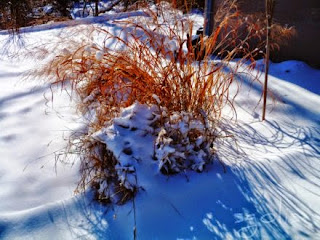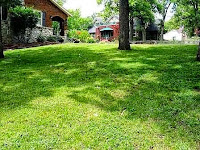Sweet
autumn clematis is a vigorous vine that is renowned for its late summer vanilla-scented flowers and for the nectar-rich flowers that attract butterflies and
hummingbirds.
Clematis is simple to grow, however, if it is not pruned after the
flowering season it can be invasive and will take over your yard.
If you have tried to grow clematis in the past and have failed I would
suggest that you try again by planting sweet autumn clematis.
For a healthy and vigorous climbing clematis, grow in an area where the soil is well-drained, and where the leaves have full sun and the roots are shaded.
When
I moved to the central region of the United States the home that I purchased
was a historic home that had many gardens. On my first observation, I noted that
the gardens were covered with an invasive vine. With careful inspection I found
one hundred vines growing all over the gardens.
Many of the vines exceeded the length of 36 inches. They were vigorous and aggressive covering everything they came across. They grew up the trellis and the river rock wall. I needed to trim a few back to prevent them from spilling over into the pond.
My husband wanted to rip out the fast-growing vines but I said “No”, I told him it was sweet autumn clematis. By the end of summer, the clematis vines were covered with delicate and very fragrant blooms. The fragrance was sweet like vanilla and the vines were laden with so many flowers that from a distance it looked like snow.
Photographs of sweet autumn clematis - my yard and garden.
 |
| Trellis made by husband - Clematis with day lilies and grasses |
 |
| Clematis growing up Maple tree with liriope ground cover |
 |
| Mature sweet autumn clematis vines look thick and woody. |
 |
| Fragrant blooms in the end of August |
Questions and Answers
Where should I grow sweet autumn clematis?
The
clematis is eye appealing when growing up the side of a tree or trailing
downward over a rock garden. It is also a good choice for steep hills or slopes
and will blanket your trellis, arbor, chain link fence or mailbox with lush
green leaves and fragrant flowers in late summer. Sweet autumn clematis is
deciduous in most areas however if you have mild winters the plant may be semi-evergreen.
When
should I plant clematis?
Plant
the clematis in USDA growing zones 4-11 in the spring after the danger of frost
has passed.
Can you grow clematis from seed?
Yes start
the seeds indoors by planting in a seed kit. Plant seeds 8-12 weeks
before the last frost in spring. When vines are four inches in length and
the threat of spring frost has passed you can plant the sweet clematis flowering
vine outdoors.
How do you plant clematis?
For
a nursery grown plant you would dig a hole that is the same depth as the
container with a similar width. Break up the soil clumps so that the texture
is fine. Mix compost or manure with the soil.
Set the crown of the sweet clematis in the center of the hole with the roots facing outward. Backfill the hole and water well. Apply a thin layer of mulch around the stem and roots of the clematis.
Protect the clematis roots from the summer heat by applying mulch.
Should
I grow Clematis on a trellis?
Yes
clematis looks stunning growing on a trellis. It is best to
install the trellis five inches behind the vine.
The clematis vine will attach itself to the sturdy structure by twisting a runner around the support.
Make sure that the leaves are in the sun and the roots are shaded. You can keep the roots cool by applying two inches of mulch around the stem of the clematis. The mulch will aid in moisture control, prevent weed growth.
Care
for sweet autumn clematis:
Mist
the clematis leaves daily and water the roots. I find it best to water
the clematis in the morning and when my summers get extremely hot (mid 90's to
100's) I will also water the clematis in the late afternoon. During the
peak heat, months of summer clematis need to be watered daily.
Prune clematis after the flowers bloom.
How do you harvest sweet autumn clematis seeds?
In
late summer after the clematis has produced a seedpod (see image below)
collect the seeds from the brown shell and set the seeds in an envelope for safe
keeping. Seal the envelope and write the name of the plant.
Keep
the seeds for the next spring plantings.
 |
| Sweet Autumn Seedpod: Image by SGolis |














